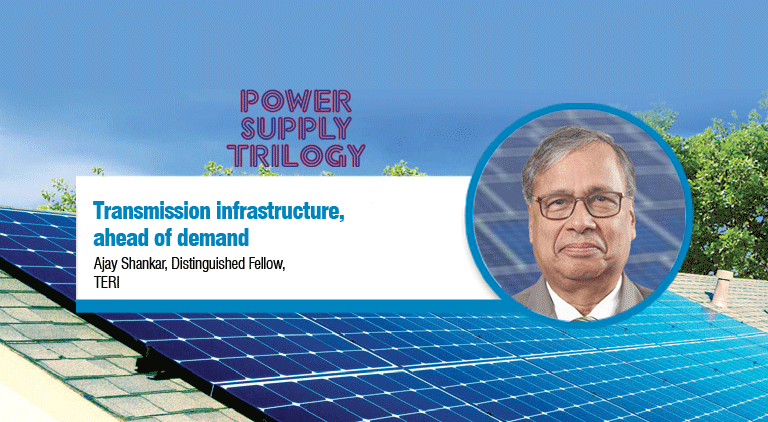Transmission infrastructure, ahead of demand
By EPR Magazine Editorial November 16, 2019 11:58 am IST
By EPR Magazine Editorial November 16, 2019 11:58 am IST

If you move towards prepaid meters, it becomes easily possible to make sure that every unit of electricity consumed is paid for.
Ajay Shankar, Distinguished Fellow, TERI in a discussion with Megha Iyer says that till the distribution sector is fixed both financially and technically, the situation for the consumer would not be satisfactory.
Moving away from power generation and focusing on supply. Your take?
The focus on supply of electricity is now necessary and it is a challenging task. India has achieved enormous success in providing electricity to all households in the course of the last ten years. It also now has adequate generation capacity. Some people feel there is surplus capacity for the present. Fortunately, lots of projects for power generation are also in the pipeline. Therefore, it is expected that we will be comfortable in terms of power supply at the generation end for the next few years.
The real challenge is to ensure that all households get reliable and quality power supply. This is a major challenge as it needs continuous improvements in the distribution network and its carrying capacity. However, most of the distribution companies in India are financially weak. The gap between the average cost of supply and the average revenue per unit is unacceptably high. There are reports of rising losses and increasing unsustainable levels of debt in most of the distribution companies. Till we can fix the distribution sector, both financially and technically, the situation for the consumer would not be satisfactory. Further, if the DISCOMs are not getting enough revenue, then they have difficulty in repaying loans to the banks as well as in paying the GENCOs for the electricity that they buy. So, for the financial health of the whole sector, it is imperative that the financial health of the distribution part of the supply chain where you collect revenue from the end consumers is set right at the earliest.
According to PRAAPTI portal, there has been a rise in the outstanding dues to GENCOs by the DISCOMs. Would this move to focus on supply, will bring any relief to the debts?
The real challenge is to collect enough from the consumers so as to pay the generators. This means eliminating the gap between the cost and the revenue realised per unit and also have a bit of a surplus so as to be able to invest in improving the distribution network. To achieve this there are two ways of going about it; the first, is to increase the tariff, and the second, is to reduce the AT&C losses so that you collect as much revenue as possible without leakage of electricity or non-payment for consumption of electricity. This challenge varies from state to state. So, I think the ideal approach would be for the central government and its agencies to focus state by state and try to work out how a turn around can be brought about in each state.
What policy or tariff changes are you expecting to come under the UDAY 2.0 as it is supposedly aimed at improving operations?
DISCOMs are facing one of the greatest threats of cyber attack. On the wake of this, how is an efficient supply possible?What kind of infrastructure should be in place for an efficient supply?
Essentially, the transmission and distribution network should have a carrying capacity which should be in excess of current demand. Demand has to keep on rising as our per capita consumption needs to be doubled and tripled. The infrastructure should be ahead of demand, so that robust quality supply is ensured for every consumer. In Delhi and Mumbai the carrying capacity is now good enough. When there is a sudden rise in peak demand due to high temperature in summer the network is not under stress. The whole of India needs a similar level of cushion in the carrying capacity in Distribution.
Ajay Shankar,Distinguished Fellow,TERI
We use cookies to personalize your experience. By continuing to visit this website you agree to our Terms & Conditions, Privacy Policy and Cookie Policy.